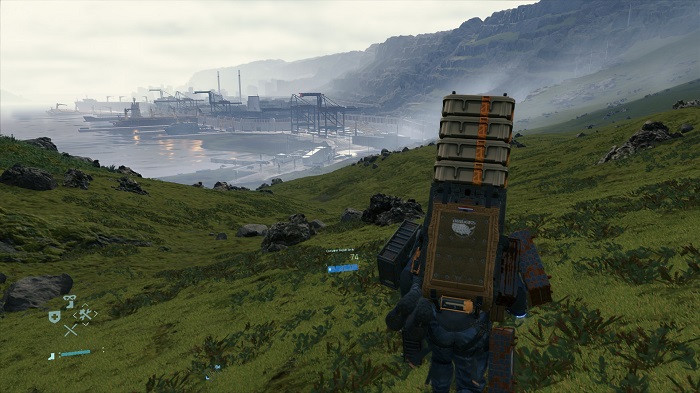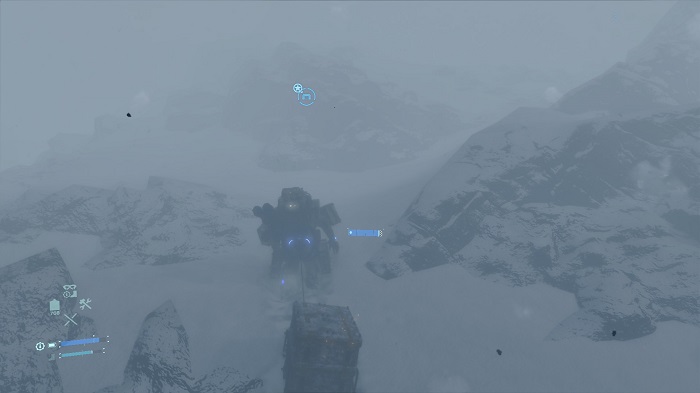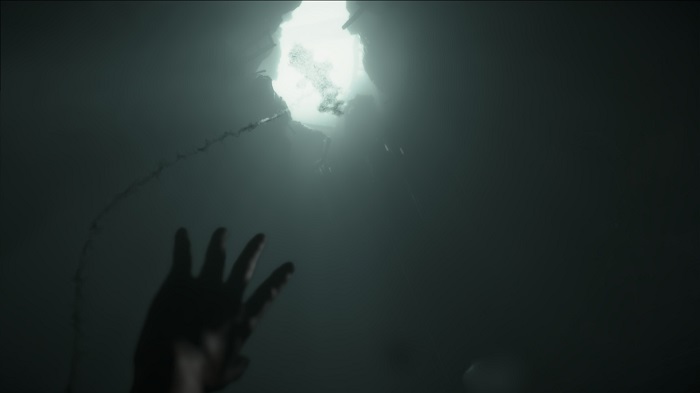Subjective:
Developer KOJIMA PRODUCTIONS and publisher 505 Games present the PC port of Death Stranding. Hideo Kojima, fresh from his stint at Konami with the Metal Gear franchise, directs his team of developers to create a new genre. From that comes a game that contains the first post-apocalyptic package delivery system as a primary focus in the hopes that humanity can be united under a new United States. KOJIMA PRODUCTIONS is in uncharted territory, and hopes you’ll be moved by the experience.
Objective:
If you aren’t already familiar with the ways body movement can go wrong, then Death Stranding will teach you dozens of ways it can. From the first step, you will need to pay close attention to the player character Sam “Porter” Bridges. His body reacts to the slightest changes in the landscape, how much cargo is attached to him, and what the weather conditions are. There are some tools to guide Sam, such as balancing acts that can be performed with the controls and equipment which stabilizes his center-of-gravity. Eventually you may use vehicles, but even these are affected by how much weight is carried and the landscape you decide to drive it on.

With movement as the primary focus, Sam’s job delivering packages is the secondary focus as the player will need to balance every aspect of Sam’s journey with skills and supplies as needed. Each successful delivery increases Sam’s connection to the different destinations and unlocks new equipment to help with Sam’s survival. If you’re feeling helpful, you may find additional cargo scattered around that belongs to other players of Death Stranding, and you may return it for light kudos from the recipient while the player responsible for the delivery finally receives their reward. Online play also extends to the different structures Sam may build as each structure may appear in another player’s game. Another player’s structure appear in yours, or you may work together by contributing materials to reconstruction efforts.
Some fights break up delivery sections as Sam has to engage in battle with specters. These umbilical-corded ghosts are known as beached things (BTs) and work as the main foe you encounter. There are also fellow porters who have gone mad from the isolation. You may sneak passed the majority of these encounters by using radar to pinpoint threats, holding your breath, and crawling cautiously. A baby stuck in utero within an artificial womb also provides cues about nearby threats, and may be kept calm by playing or resting in a base.

Assessment:
As of writing, I have 94 hours logged playing Death Stranding. That’s almost four days of cautious planning and listening for invisible threats. It’s 94 hours of the comfort of routine breaking into sudden panic, feeling the thrill of speed come crashing down with a sudden stop into the terrors I thought I could ignore, all while living in transience between ghosts and the wounded. My time was respected in the only way mortality allows, by bearing careful observation to a world decaying from entropy. In that entropy lay every emotion, carving a path for others to follow, and carrying the unspoken message, “This trip will wear you down, but the marks you leave will help others on the same path.”
Death Stranding takes the opposite path from so many games that build hollow self-confident monuments to themselves. It allows you to feel lonely. There’s no cheery mini-game or comic relief coming over the horizon. To overcome that loneliness you have to learn to talk to ghosts while hoping your faith will be acknowledged. This is the experience I got the barest whiff of when No Man’s Sky launched as an isolated oddity before being turned into yet another base builder. The omnipresent grey and exhausted-looking greens of the landscape reflect the heavy souls of the people who still make their lives work. They’re homogeneous visuals without being monotonous, creating a subtle texture of personality with each home perched on a high hill or memento lost downstream of an abandoned city. Each structure I build is a monument of belonging in the middle of despair and a hope that someone will find, then connect, with the support I throw out as an act of faith.
Being alone for so long meant I spent a lot of time getting to know Sam’s body. His is a working class physique befitting his working class role. He starts the game jerking too and fro, acknowledging but not quite having the strength to go in the direction I’m tilting the stick in, and admonishing both himself and me whenever we crash. As Sam’s legend grew toward the end of Death Stranding I’d find the courage, backed by Sam’s growing strength, to take that extra jump or start sprinting in an area that humbled earlier attempts. Even so, I’d still find secret groans or overestimate Sam’s strength by attempting a maneuver that leaves Sam hurt and our packages stranded.

Even when Sam felt out of my control, it was because my direction was too stern or I hesitated on a movement. By the end I’d be combining my weaknesses in control, such as going downhill into barely agreed upon speedy descent. A common traveling scenario involved toggling balance long enough to regain control, but not long enough to lose much momentum. My overconfidence often extended to using the vehicles as I rammed into BTs toward the beginning of Death Stranding, while slipping off cliffs at the end. I’m still learning new ways to mess up while brainstorming how to utilize the force of my mistakes to keep moving forward.
Going forward means delving into Death Stranding‘s naked sincerity. This isn’t new for Hideo Kojima, who names his primary characters on broad emotions or characteristics, then gives them monologues more designed to inspire Wikipedia summaries than convey emotional storytelling. Death Stranding is more interested in asking open-ended questions about why we’re here and is wise enough to avoid direct answers. I was left to infer answers to their questions about the human condition in the journey around their homes. Even the ostensible villain of Death Stranding is just a man who got caught up in a force of nature, struggled to understand it, and was left in its thrall with the question of why suffering exists remaining unanswered in his mind.

Death Stranding is the closest gaming has come to a humanist prayer. It doesn’t shy away from despair or the tasks we take upon ourselves to avoid staring at the hole in the center of it all. So every second of our time is respected to the point each tick of Sam’s journey is marked on the in-game map. This will all disappear when Death Stranding‘s servers inevitably go down, but every structure goes into the future with the possibility of helping another until I face the last great disappointment.
The solitary bit of Death Stranding that doesn’t yield more humanist solidarity involves typical video game shooting scenarios. Hand-to-hand encounters, or carefully tying up foes, has the same concrete reality and sudden threats as the landscape. But once Sam needs a gun it’ll be aim, shoot, reload, and repeat until the scene is over with. They’re gone so quickly that even Death Stranding seems to agree they’re unnecessary, and lines up with the reports that Death Stranding was supposed to be “darker” in its earlier design phase. Bless the developers for realizing this was a creative dead-end, I just wish they went the extra step and got rid of the shooting gallery segments entirely.

Death Stranding was reviewed using a reviewer-purchased code for use on the PC via the Steam platform.
The Review
Death Stranding
It's a miracle something as sincere and powerful as Death Stranding gets made. The respect shown for my time, both in the challenge of each step and rewards that allow connection through faith-fueled construction, kept me constantly enthralled at my place in the world. My mind continued to drift toward those big questions even when Sam's body was safely in the air via late-game modes of transportation. Death Stranding didn't consume me. It gave me the tools to consider my place in the world and the means to make peace with entropy. The end can be beautiful.
PROS
- Unapologetically demands attention to Sam's body in a way which firmly grounds the player in each second.
- The demands of Death Stranding come with equal rewards allowing you and Sam to leave your marks on the landscape as you two see fit.
- Outside the gameplay you'll find a gorgeously told story which seeks to find hope within entropy.
CONS
- Shooting gallery sections are unecessary holdovers from a less creative game.



